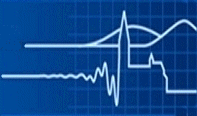SS 2020 - Physical Processes of Self-Assembly and Pattern Formation
Lecturer: Prof. Dr. Günter Reiter
Time: 3 h/week
Location: online course
Tutorial and Q&A: Tue 14:00-16:00
Start: 11.05.2020
General information:
All courses during SS 2020 will be held online.
More specifically, this means:
- All slides will come with audio track for self-study available on ILIAS.
- We will communicate with you via "Zoom". This is a video conference program comparable to Skype. If there are any concerns from your side please let us know.
- Prof. Reiter will be available for Q&A via Zoom.
- Tutorials will be held via Zoom as well.
- Tutorials and Q&A sessions will be merged into one weekly event taking place on Tuesdays from 14h00 to 16h00.
Our goal is to allow for discussions and questions during Q&A sessions with Prof. Reiter to be possible as if you were in a normal class room. The exact timing of these sessions will be determined by mutual agreement.
Please do not hesitate to contact us if you have any questions or concerns at reiter-office@physik.uni-freiburg.de
ECTS points:
Depending on your course of studies Prof. Reiter will have a little discussion of 30 min with you (you may call it an oral exam). For STUDIENLEISTUNG, there will be no grades.
Goal:
Questions about how organization and order in various systems arises have been raised since ancient times. Self‐assembling processes are common throughout nature and technology. The ability of molecules and objects to self‐assemble into supra‐molecular arrangements is an important issue in nanotechnology. The limited number of forms and shapes we identify in the objects around us represent only a small sub-set of those theoretically possible. So why don't we see more variety? To be able answering such a question we have to learn more about the physical processes responsible for self-organization and self-assembly.
Preliminary program:
“Physical laws for making compromises”
Self-assembly is governed by (intermolecular) interactions between pre‐existing parts or disordered components of a system. The final (desired) structure is 'encoded' in the shape and properties of the basic building blocks.
In this course, we will discuss general rules about growth and evolution of structures and patterns as well as methods that predict changes in organization due to changes made to the underlying components and/or the environment.
Students will learn how structural organization, i.e., the increase in internal order of a system, can lead to regular patterns on scales ranging from molecular to the macroscopic sizes. They will understand the physics of how molecules or objects put themselves together without guidance or management from an outside source.
Previous knowledge: Experimentalphysik IV (Condensed Matter)
Literature:
- Yoon S. LEE, Self-Assembly and Nanotechnology:A Force Balance Approach, Wiley 2008
- Robert KELSALL, Ian W. HAMLEY, Mark GEOGHEGAN, Nanoscale Science and Technology, Wiley, 2005
- Richard A.L. JONES, Soft Machines: Nanotechnology and Life, Oxford University Press, USA 2008
- Philip BALL, Shapes, Flow, Branches. Nature's Patterns:A Tapestry in Three Parts, Oxford University Press, USA
- J.N. ISRAELACHVILI, Intermolecular and Surface Forces, Third Edition, Elsevier, 2011
Continuative and supplementary references will be given during the lecture.
